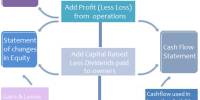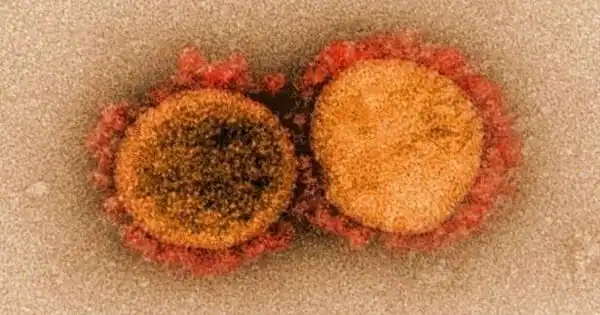Executive Summary
A few comments on the organization and content of the report may be helpful to reader. In doing so, we realize that some topics may be more important to some reader then to other. For that reason we some advanced material (e.g. questionnaires) appears in appendices. Our goal is to help the reader who must compare financial position of these two companies.
First we focused on the essential element of this report. We have included here the introduction of this report, objectives of the report, findings, methodology, so that the reader can get ideas easily.
The second part is very important from the sense of this report. Here we have given our recommendation of the report. We have tried out level best to give the commendation neutrally. It also contains the conclusion of this report.
Introduction
This report is based on ratio analysis of financial situation. It has been prepared by a group of students for the Financial Accounting Course (ACT 142).
This is based on a company’s financial position which is helpful for the company and us to know the real situation.
Objective of the Report
This term paper is prepared under submitted as a major requirement of the Financial Accounting Course. Financial Accounting provides the facts needed to make informed economic as well as operational control.
FINANCIAL AND OPERATIONAL HIGHLIGHTS
Current Ratio
Current Ratio = Current Asset /Current Liability
2004= 91254406/17302083
=0.53:1
2005= 344147713/224070744
=1.54:1
2006= 147757984/195660030
=0.76:1
2007= 22162225/348507592
=0.64:1
2008 = 199170170/241413574
= 0.83:1
| 2004
| 0.53 |
| 2005
| 1.54 |
| 2006
| 0.76 |
| 2007
| 0.64 |
| 2008
| 0.83 |
Acid Test
Acid Test = Current Asset – Inventory /Current Liability.
2004= 91254406 – 44036877/173020283
= 0.27:1
2005=150587991 – 78205424/224070744
= 0.32:1
2006= 147757984 – 78998508/195660030
= 0.35:1
2007= 161582440 – 93379046/229013506
= 0.29 : 1
2008 = 199170170 – 94574012/241413574
= 0.43:1
| 2004
| 0.27 |
| 2005
| 0.32 |
| 2006
| 0.35 |
| 2007
| 0.29 |
| 2008
| 0.43 |
Receivable Turnover
Receivable Turnover = Net Credit Sales / Accounts Receivable
2004 = 159766207/16791135
= 9.51
2005 = 249846035/32779422
= 7.62
2006 = 359622242/33825550
= 10.63
2007 = 348507592/31931562
= 10.97
2008 = 504608992 / 48739179
= 10.35
| 2004
| 9.51 |
| 2005
| 7.62 |
| 2006
| 10.63 |
| 2007
| 10.97 |
| 2008
| 10.35 |
Inventory Turnover
Inventory Turnover = COGS / Avg Inventory
2004=102764066/ 44036877
= 3.33
2005=155278202/78205424
=1.99
2006=224087190/78998508
=2.84
2007=213436907/93379046
=2.29
2008=313349515/94574012
=3.31
| 2004
| 3.33 |
| 2005
| 1.99 |
| 2006
| 2.84 |
| 2007
| 2.29 |
| 2008
| 3.31 |
Profitability Ratio
Profit Margin= Net Income /Net Sales
2004 = 7346797/159766207
= 0.046
2005 = 11732692/2498460
= 0.05
2006 = 15335549/359622242
= 0.042
2007= 13743934/348507592
= 0.04
2008= 37882317/504608992
= 0.075
| 2004
| 0.046 |
| 2005
| 0.05 |
| 2006
| 0.042 |
| 2007
| 0.04 |
| 2008
| 0.075 |
Asset Turnover
Asset Turnover = Net Sales / Total Asset
2004= 159766207/451546465
= 0.36
2005= 249846035/494735704
= 0.51
2006= 359622242/511381417
=0.70
2007= 348507592/509175013
=0.68
2008= 504608992/712460678
= 0.71
| 2004
| 0.36 |
| 2005
| 0.51 |
| 2006
| 0.70 |
| 2007
| 0.68 |
| 2008
| 0.71 |
Return On Asset:
Return on Asset = Net Income /Total Asset.
2004 = 7346797/451546465
= 0.016
2005 = 11732692/494735704
= 0.023
2006 = 15335549/511381417
= 0.29
2007 = 13743934/509175013
= 0.27
2008 = 37882317/712460678
= 0.053
| 2004
| 0.016 |
| 2005
| 0.023 |
| 2006
| 0.29 |
| 2007
| 0.27 |
| 2008
| 0.053 |
Return On Equity:
Return on Equity = Net Income /Total Equity
2004 = 7346797/37124233
= 0.19
2005 = 11732692/2574138
= 0.46
2006 = 15335549/203597600
= 0.075
2007 = 13743934/203597600
= 0.067
2008 = 37882317/20359760
= 0.18
| 2004
| 0.019 |
| 2005
| 0.46 |
| 2006
| 0.075 |
| 2007
| 0.067 |
| 2008
| 0.18 |
Earning Per Share
Earning Per Share = Net Income / Number of Common Stock
2004= 7346797/2035975
= 3.61
2005=11732692/203597
= 5.76
2006=15335549/2035976
= 7.53
2007=13743934/2035976
=6.75
2008= 37882317/2035976
= 18.61
| 2004
| 3.61 |
| 2005
| 5.76 |
| 2006
| 7.53 |
| 2007
| 6.75 |
| 2008
| 18.61 |
Price Earning Ratio :
Price Earning Ratio = Market Price / Earning Per Share
2004= 100/3.61
= 27.70
2005=100/5.76
= 17.36
2006=100/7.53
= 13.28
2007=100/6.75
=14.81
2008= 100/18.61
= 5.30
| 2004
| 27.70 |
| 2005
| 17.36 |
| 2006
| 13.28 |
| 2007
| 14.81 |
| 2008
| 5.3 |
Pay Out Ratio :
Pay Out Ratio = cash dividend / net income
2004 = 15836572/1809705
= 8.75
2005 = 11979441/4051220
= 2.96
2006 = 7626980 /224684799
= 0.03
2007 = 8845512/22162225
= 0.04
2008 = 82016725/5772096
= 1.42
| 2004
| 8.75 |
| 2005
| 2.96 |
| 2006
| 0.03 |
| 2007
| 0.04 |
| 2008
| 1.42 |
Solvency Ratio
Debt to Total Asset Ratio :
Debt to Total Asset Ratio = Total Debt + Total Liability/ Total Asset
2004 = 488670698 /451456465
= 1.08
2005 = 520477092 /494735704
= 1.05
2006 = 53468616/511381417
= 1.04
2007 = 527199638/ 509175013
= 1.04
2008 = 508863678/712460678
= 0.71
| 2004
| 1.08 |
| 2005
| 1.05 |
| 2006
| 1.04 |
| 2007
| 1.04 |
| 2008
| 0.71 |
Time Interest Earned Ratio :
Time Interest Earned Ratio = net income before tax & Interest expense
/Interest Expense
2004 = 7346797+5537092/5537092
= 2.34
2005 = 11732692 / 11582390
= 1.01
2006 = 15335549+32481927/32481927
= 1.47
2007 = 13743934 + 34151691 /34151691
=1.40
2008 = 37882317+3211221 /3211221
= 2.18
| 2004
| 2.34 |
| 2005
| 1.01 |
| 2006
| 1.47 |
| 2007
| 1.40 |
| 2008
| 2.18 |
Remarks
Current Ratio –
When all the years are compared it is found that the current ratio of the company was better in 2005 as it was higher then 1. this entails the fact that the over all situation of the company is not good as the ratio of other years are less than 1. The ideal Current Ratio is 2:1 but here the current ratio shows that it is not a good situation for the organization.
Acid Test Ratio –
It can be said that the liquidity position of the company is not good. It has a very unpredictable future as it might find it difficult to pay it’s current liabilities on time. There is a major chance of failure as the liquidity ratio is low all the way through.
Receivable Turnover-
It can simply be stated that the receivable turn over is stable for last three years and it can be better off if the percentage is decreased. The amount of receivables simply suggest that how much money the organization is suppose to receive from outside. It is better if the company has less cash involved outside.
Inventory Turnover-
It simply entails how efficient the business is at maintaining the appropriate level of inventory. Here the inventory turn over is better in 2008 then other years as it suggest that the company is having an increased involvement outside. But a reduction in inventory turnover can lead to liquidity crisis.
Profitability Ratio-
The profit margin of the company is very low so it suggest that the company is going through a bad financial situation.
Asset Turnover-
The asset turnover ratio is also very low as the company suggest to have low ratio which simply entails the fact that company is not being able to maintain the asset on the basis of it’s income.
Return On Asset –
The return on asset is very low this simply says that the company is not having a good return all the way through the investment of it’s assets. The mainframe work is mostly not a good one for the company.
Return On Equity
The return on equity is very low this simply says that the company is having a unstable return all the way through. The whole work of the yearly return entails that the company might have to gain more sustainability on the basis of it’s existence.
Earning Per Share
This is the most important ratio as it gives the shareholder a chance to compare annual earnings of the company. Here the company is mostly dragging it’s shareholders as it can increase their number of shareholders as the company is getting a high earnings per share in 2008.
Price Earning Ratio
This increases the demand for share but here the company is getting dull as the PER is falling .This simply suggest that the company is loosing shareholders and is not in a good financial situation.
Pay Out Ratio –
It simply formulates that the payout ratio is getting dull as the cash dividend is being decreased which is not a good sign for the company. This simply suggest that the company is not in a stable position.
Debt to Total Asset Ratio –
Here the ratio is high which simply suggest that the company is having a higher debt in comparison to it’s asset .The most recent ratio 0.71 of 2008 which says that the company is trying to recover it’s position.
Time Interest Earned Ratio –
Last but not the least this simply suggest that the time interest earned is simply getting better as the company is moving towards the income which is better. It simply reflects a criteria which can be advantageous if it’s in the process of development.
By surveying the overall situation of ORION FUSION LTD we have made a clarified understanding of the financial situation which this company is facing. It is mostly running it’s business on a loss basis. The most profound way of understanding the facts that the company is facing is being possible was by doing the ratio analysis of this company.
Conclusion
Financial statements of a company is most important for finding their situation. As a partial requirement of Financial Accounting course (Act-142) this report the ratio analysis of financial statement” has been prepared.
This report broadens our understanding in internal control. Though this task we have gained real life experience on Financial Accounting. In doing this report. We faced some difficulties like secrecy of information, lack of budget, prior experience etc. So, these are some week ness in this report. The main objective of this report was to understand and find out the financial position of ORION INFUSION LTD.
Bibliography
1) Accounting principal (8 th edition)
By Weygandt, Kiso, Kimmel
2) Company profile
















